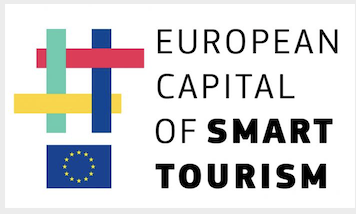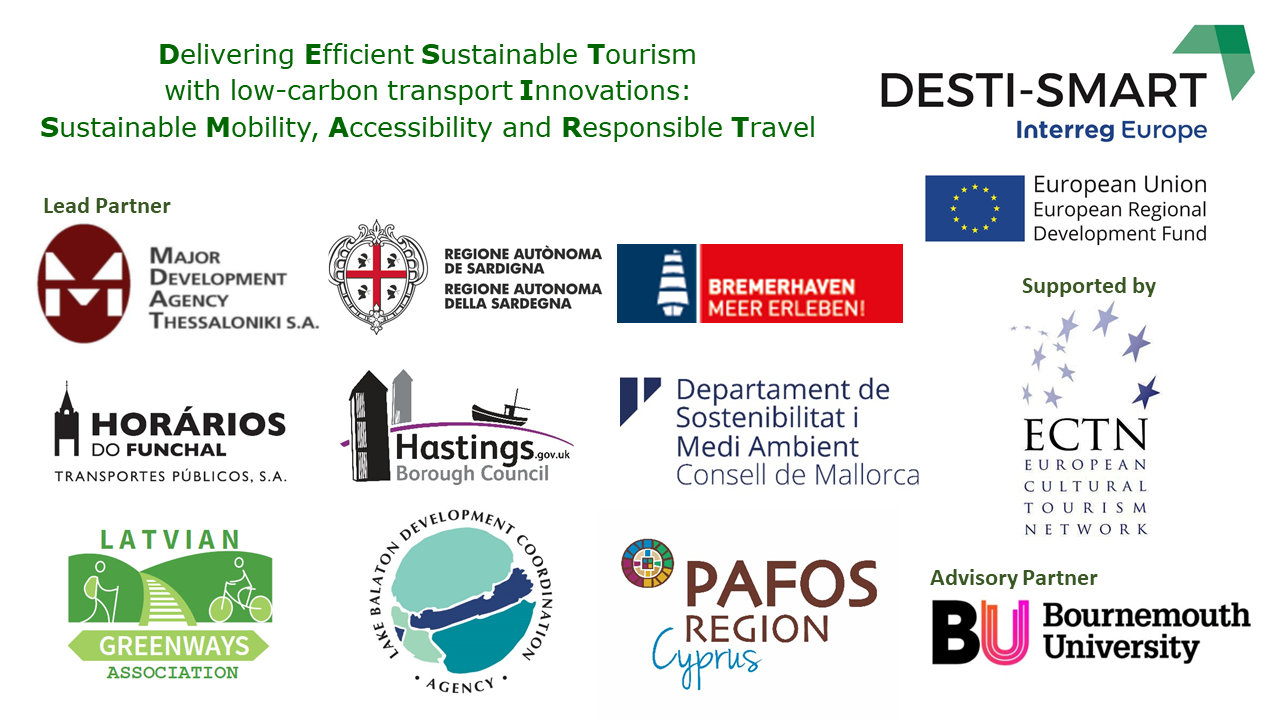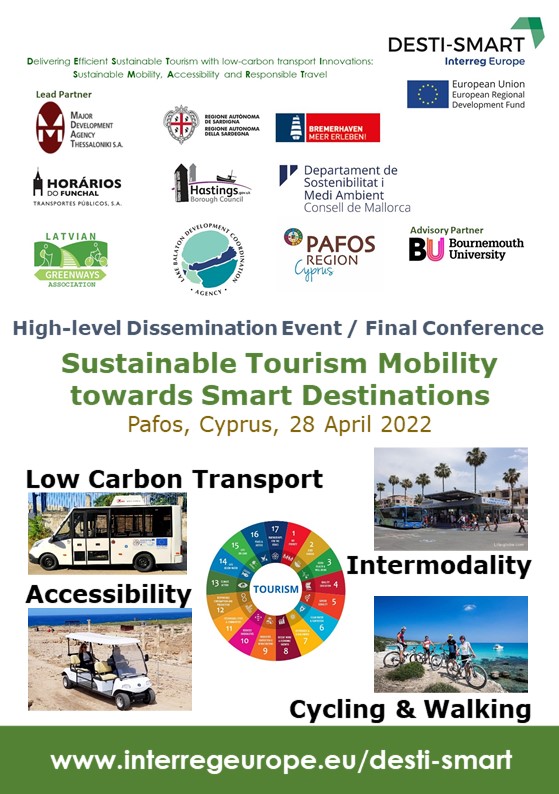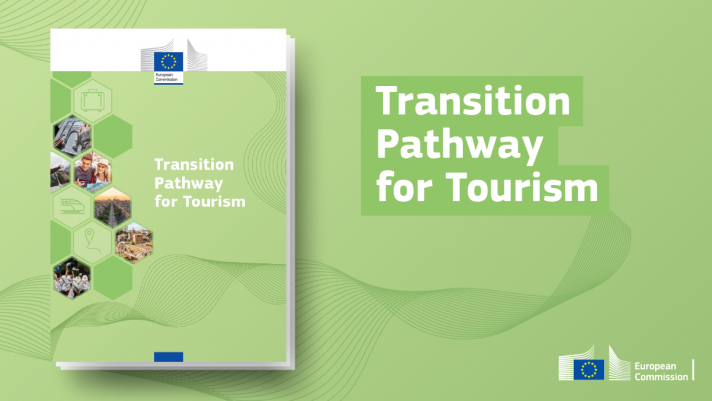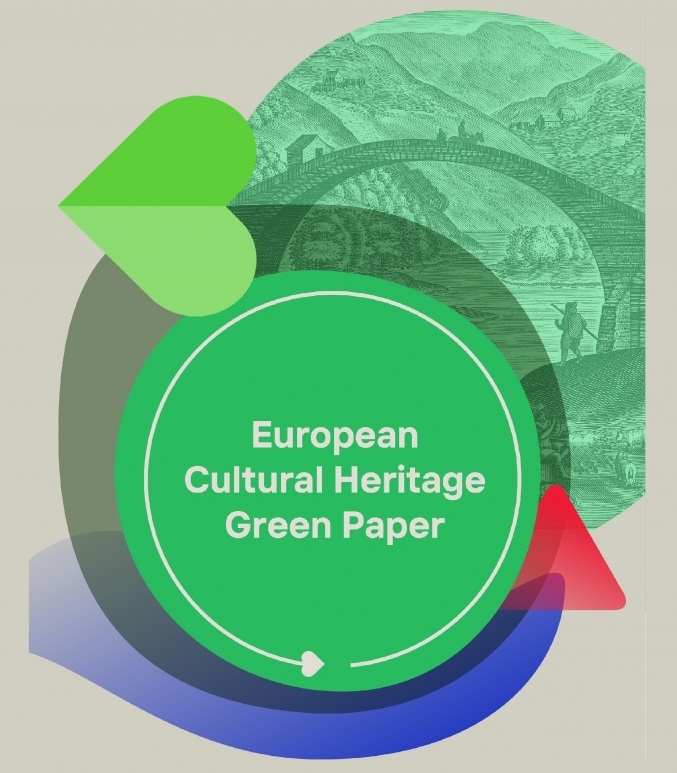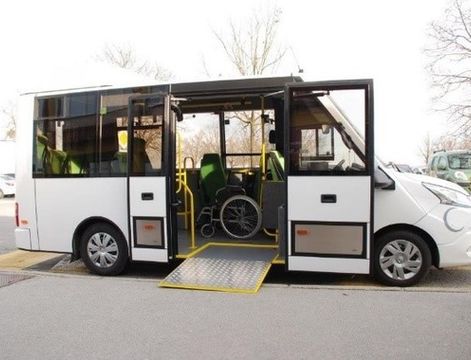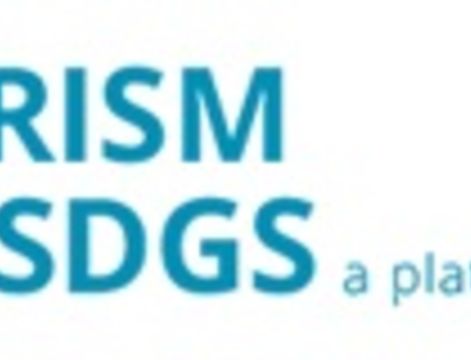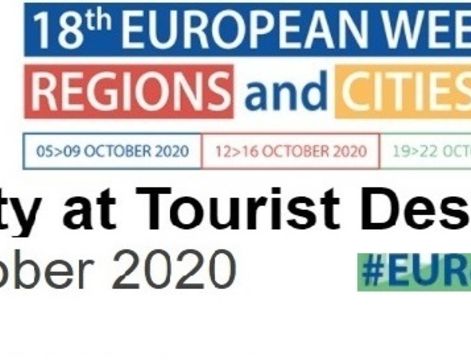Hastings Seafront Feasibility Mobility Study:
Strategic Outline Business Case
The Hastings Feasibilty Study within the DESTI-SMART project has been completed. The Study focuses on options for a low-carbon, sustainable public transport system along the Hastings seafront, to serve mainly the tourism mobility needs offerring accessiblity to the seafront attractions for visitors. This Feasibility Study will provide relevant inputs to the DESTI-SMART Action Plan for Hastings.

This report sets out the work undertaken to evaluate the possibilities for a new transit link along Hastings Seafront. The report outlines the work that has been undertaken to generate a long-list of options; the evaluation of these options to develop a short-list for detailed consideration; and finally, the strength of the case for each option in a joint Strategic Outline Business Case (SOBC).
Evaluation of the possibilities for a new transit link along Hastings Seafront to provide sustainable mobility for visitors, by:
- generating a long-list of options;
- evaluation of these options to develop a short-list for detailed
consideration; and
- assessing the strength of the case for each option in a joint Strategic Outline Business Case (SOBC).
The study does not intend to form a fully prepared business case for any option, but rather it uses the UK Treasury’s Five Business Case Model as a framework to evaluate how strong the overall case for investment in a new transit could be.
An SOBC seeks to demonstrate that the transport intervention:
- has a robust case for change and aligns with wider objectives – the ‘strategic case’;
- can be funded and is financially affordable – the ‘financial case’;
- represents value for money – the ‘economic case’;
- is commercially viable – the ‘commercial case’; and
- is achievable – the ‘management case’.
The study has been commissioned by Hastings Borough Council with ERDF co-funding through the Interreg Europe programme, as part of the DESTI-SMART project. The study concluded that the strategic case for an enhanced level of public transport service along the entire length of the promenaded seafront is very strong.
The study is co-funded by ERDF through the 'Interreg Europe' interregional cooperation programme (85%) and Hastings Borough Council (15%), as part of the DESTI-SMART project work plan.
The study has aligned with the Department for Transport (DfT) Transport Analysis Guidance (TAG) for identifying the need for intervention and developing options through an objectiveled and evidence-based approach.
A long list of sustainable options has then been identified to improve east to west connectivity for visitors and residents, as follows:
Option 1 – Route 66 (Do Nothing);
Option 2 – Narrow Body “Mini” Bus;
Option 3 – Bi-directional Bus;
Option 4 – Mini “Tram”;
Option 5 – Autonomous Pods; and
Option 6 – Extending Miniature Railway.
The options then assessed against a multi-criteria assessment framework, The assessment seeks to identify the comparative performance of each of the options across objective fit, expected monetised benefits, expected qualitative benefits, costs, revenues, funding and deliverability. The different options have then been assessed against the criteria with two preferred options selected to progress to Strategic Outline Business Case (SOBC): a bi-directional bus and autonomous pod service. These options were selected following an option identification, development and assessment as part of the DESTI-SMART project.
Close liaison with key stakeholders has been maintained throughout.

Complementary investment in improved public realm, signage and wayfinding, and hire schemes and infrastructure for bike, electric bike and micro-transit could support the integration of the railway stations, town centres, seafront and other visitor attractions; as well as enhance the visitor economy and improve the accessibility of the beautiful seafront and travel along its attractive promenade.
The study findings have been presented to a local stakeholder group meeting in order to receive feedback for each short-listed option. Feedback from stakeholders shows there is further opportunity to investigate and refine an improved public transport service along the Hastings seafront, whether in the form of a bi-directional bus, autonomous pod service or improvement to the existing bus service (currently with diesel vehicle, however electric options are possible).


Autonomous Pod Bi-directional Eclectric Bus
This kind of feasibility study provides a destination authority and key stakeholders with an overview of short-listed options, in comparison to a reference case, highlighting key opportunities and risks.
The indirect benefits of low-carbon, sustainable smart tourism mobility system should be taken into account, towards a 'Smart Destination'.
The full report can be fount at: www.interregeurope.eu/desti-smart/library/




